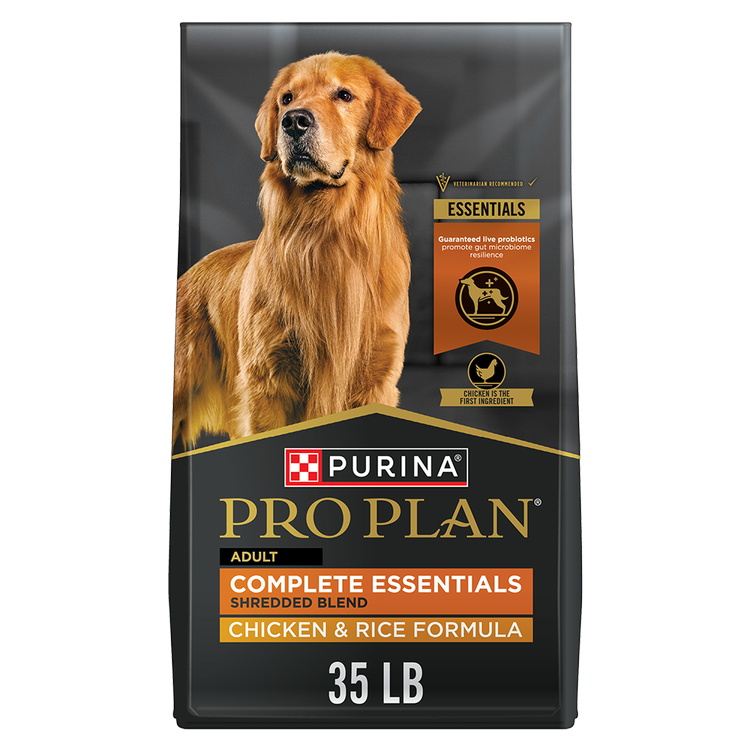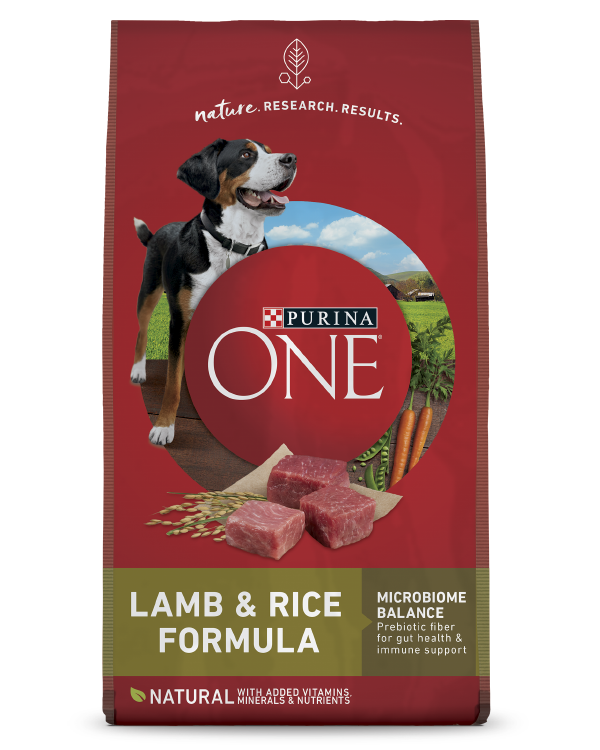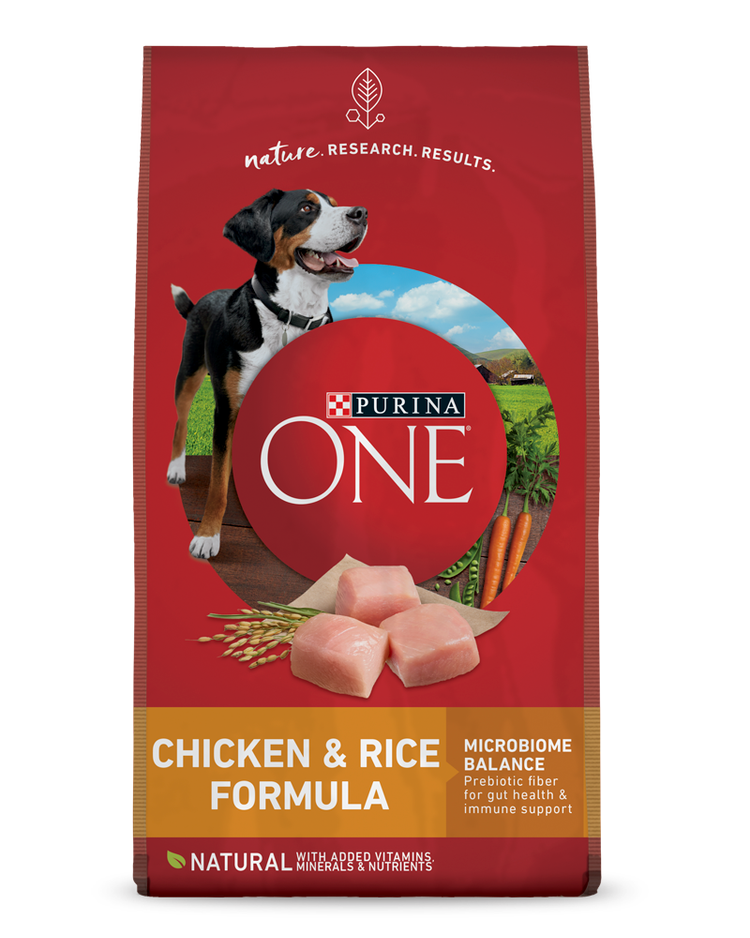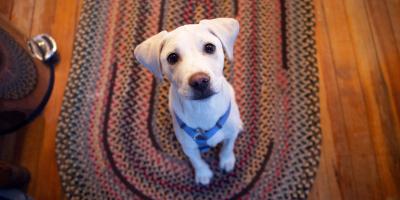Why Do Dogs Eat So Fast?

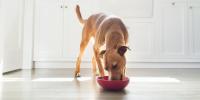
If you have a dog who eats too fast, gobbling down their food, barely chewing and even choking on the kibble, this is a question you’ve likely asked yourself.
As humans, we often take time to enjoy (and actually chew) our meals. But dogs often have a different relationship with food, which can result in eating more quickly than is necessary, or healthy.
Does Your Dog Eat Too Fast? Here Are Some Possible Reasons Why
A Less Particular Palate
Do dogs have taste buds? The answer is yes, but in lower numbers than humans do.
A dog’s tongue is equipped with only around 2,000 taste buds, while human tongues have many more – around 9,000.
This makes a big difference in how much your dog tastes (and might help explain some of the less-than-appetizing things they try to sample in the yard). Fewer taste buds mean dogs get less taste sensation from their food. So, for your dog, eating might be more about quickly filling their tank, so to speak, than actually savoring their meals.
Beating the Competition
Maybe your dog is channeling the eating behavior of their wolf ancestry. Or puppyhood, when mother’s milk was the prize and littermates were rivals. If you have two dogs eating at the same time, one dog may see the other as a potential mealtime marauder.
Regardless of the source of the behavior, a valuable resource like food is one most dogs don’t want to lose. Eating it quickly is one way to ensure that they get, and keep, their share.
A Health-Related Issue
Eating too fast can also be a sign of something affecting your dog’s well-being. Parasites, for example, can rob a dog of nutrition and make them insatiably hungry. Changes in levels of hormones that tell your dog’s body that it’s full, or a thyroid condition, can cause an increase in appetite, resulting in faster eating.
If you notice your dog’s eating becoming faster and more frenzied, check with your veterinarian to make sure it’s not due to a health issue.
Can Eating Too Fast Cause Problems for Dogs?
The most common dog-eating-too-fast symptom, or problem, is of course the too-speedy emptying of your dog’s bowl…so quickly that they don’t seem to remember the meal you just gave them.
But there are other digestive system problems that this behavior can cause.
Can Dogs Throw Up from Eating Too Fast?
Choking is a concern when a dog eats too fast. Dogs who don’t take time to completely chew their food before swallowing can end up vomiting it back up. Worse yet, they can choke on food that isn’t properly chewed.
Can a Dog Eating Too Fast Cause Diarrhea?
Gulping down food too fast can cause dogs to take in an unhealthy amount of air. This can cause your dog to suffer from a buildup of gas, and accompanying burping and flatulence.
A more serious effect of eating too fast is that it can increase your dog’s risk of developing gastric dilatation and volvulus (GDV). The common term for this is bloat, and without immediate veterinary care it can be fatal.
How to Stop a Dog From Eating Too Fast
If you have a speedy eater, getting them to slow down at mealtime is important. Here are some tips on how to slow a dog down from eating too fast.
Tools to Help Slow Down Eating
- Puzzle feeders – These can be a fun way to give your dog some or all of their meal, along with a stimulating interactive play session.
- Bowls for dogs who eat too fast – When you’re choosing a bowl for your dog, shop for one of these. Much like puzzle feeders, they are made with built-in grooves, knobs or other obstacles that your dog has to work around to get at their kibble. In addition to providing mental stimulation, these bowls are designed to keep your dog from gulping down huge mouthfuls of food.
- Turn over a metal feeding bowl – Get your dog a sturdy metal dog bowl that is designed not to tip over. Turn the bowl upside down and serve their kibble in the indented ring between the bowl and the outside wall.
Other Tactics to Slow Down Your Dog’s Eating
- Serve smaller meals more frequently – There is no rule that you have to limit your dog to two meals a day. If your schedule permits, try feeding your dog several smaller meals throughout the day instead, so they gobble up less food at a sitting.
- Feeding stations throughout the house – For a variation on the above tactic, try dividing your dog’s meal into several portions, and placing them in bowls in different areas of your home. It’s like a progressive dinner for your dog!
- Using kibble for training – Using kibble for training can be a way to moderate your dog’s eating speed. It can also provide a great opportunity for activity and bonding.
Put the Brakes on Speed Eating
Through some creative management at mealtime, you can help your dog slow their eating to a more reasonable rate of speed. While they might not stop and savor every morsel you put into their bowl, at least you’ll know you’re helping to make mealtime safer, and hopefully more enjoyable.
For more expert tips on feeding your dog, explore our other dog feeding articles.
Related articles
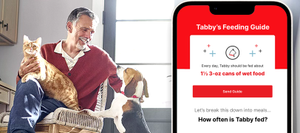
How Much Food Is Right for Your Pet?
Get a personalized feeding guide for your dog or cat from Purina’s nutrition experts.

